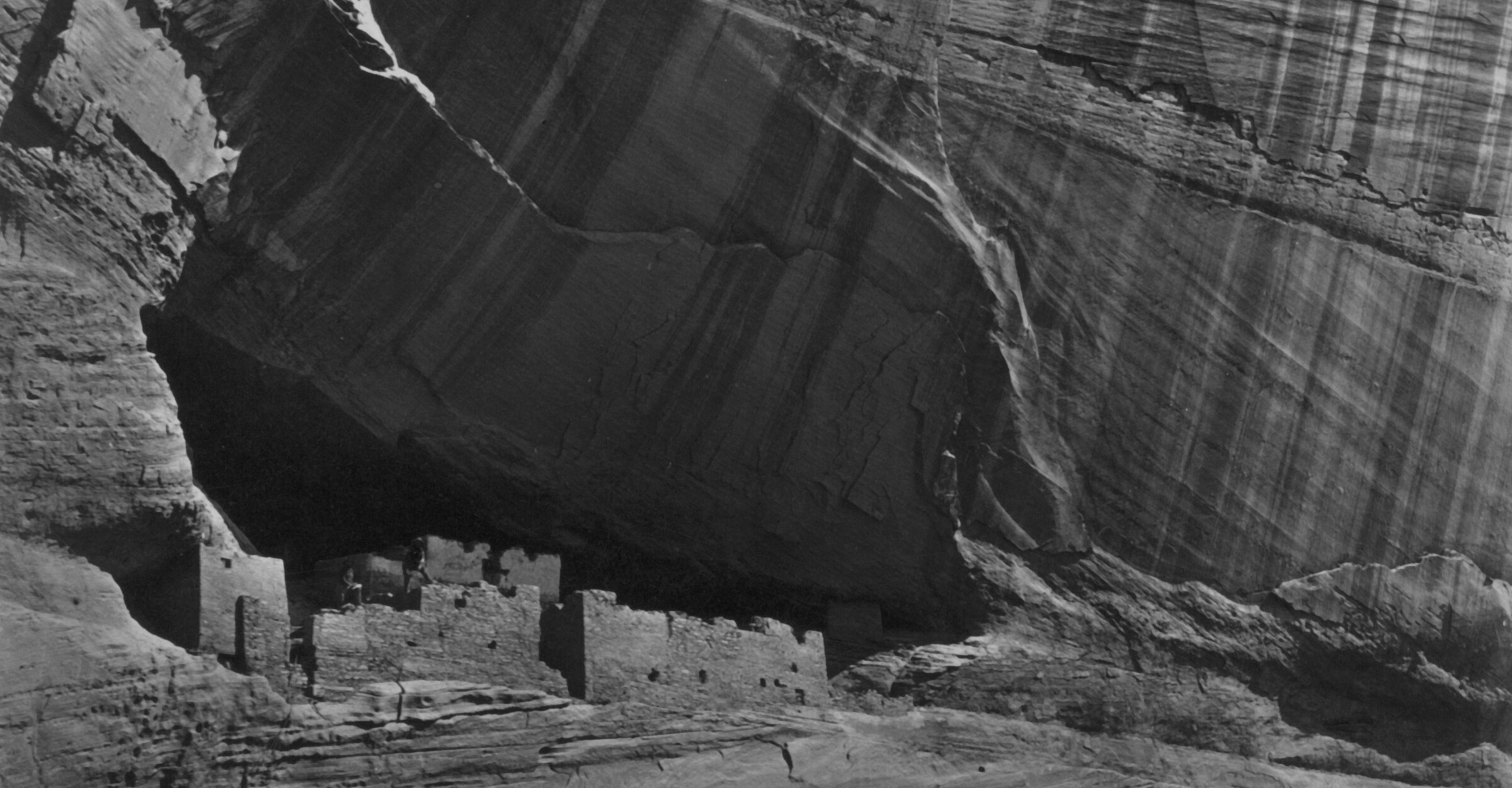This feature was published in conjunction with the screening of Redskin at A Day of Silents 2019
Ages before Douglas Fairbanks scrambled up its sheers to rescue a woman in 1917’s A Modern Musketeer and Richard Dix’s Wing Foot left its fertile valley to attend a white man’s college in 1929’s Redskin, Canyon de Chelly was home to the Ancestral Puebloans who built the stone houses still tucked into its cliffs today. But Canyon de Chelly takes its name from Native Americans who came later, the Diné, or Navajo, whose “Tseyi’” translates as “rock canyon.” It is one of three canyons bound by four mountains—Mt. Hesperus, Mt. Taylor, Mt. Blanca, and the San Francisco Peaks—that make up the Dinétah, the traditional Navajo homeland.
900–1300 Ancestral Puebloans, or Anasazi, build communities in the Four Corners region of what is now the U.S. Southwest. After a prolonged drought they abandon Arizona’s Canyon de Chelly but remain at New Mexico’s Acoma Pueblo, where Redskin’s Corn Blossom lives.
1540 Francisco Vázquez de Coronado reaches the Southwest. The Spanish continually raid the area now farmed by the Hopi.
1630 Descended from people who came from Alaska and Canada, the nomadic Diné have arrived and turn the canyon and its valley into their heartland. In his report to the king of Spain, Portuguese missionary Fray Alonso de Benavides writes from Santa Fe that “these Apachede Nabaju are very great farmers.” The name sticks and the Diné become Navajo to outsiders.
1805 The Navajo deploy time-honored tactics to hide their families in the caves of Canyon de Chelly when a criollo colonel leads an invasion in the dead of winter. Puebloan-made handholds as well as enormous ladder poles (some remain in place today) are used to ascend the heights and then pulled up behind so enemies cannot follow. Some Spaniards succeed in reaching the hideaway and, in fighting off one soldier, a Navajo woman tumbles over the cliff taking him with her. One-hundred-fifteen Navajos are killed at what becomes known as The Place Where Two Fell Off. Thirty-five are taken as slaves and three-hundred-fifty sheep are stolen. The colonel reports back that Chelly’s fertile valley is “spacious and in it they have plenty of farmlands which are wanted by a regular river that runs through the middle.” Paintings still visible on the rock faces record battles with the Spanish who are depicted on horseback.
1821 “The Navajos detect no difference,” writes one historian about Mexico becoming independent of Spain with territories that include Alta California, Santa Fe de Nuevo México, and Coahuila y Texas.
1849 The Navajo welcome U.S. Colonel John MacRae Washington’s men with baskets of their famous peaches when they arrive at Canyon de Chelly, part of territories wrested from Mexico the year prior. A dispute over ownership of a horse ends in bloodshed when Washington fires a cannon at Navajo warriors, killing several, including their elderly chief, Narbona. Artillery- made pockmarks still mar the rock face below the White House ruins.
1851 Canyon de Chelly warriors repel a raid by Edwin Vose Sumner, the colonel who builds Fort Defiance in the Dinétah.
1860 Frustrated by broken agreements, grazing on their lands, and theft of their sheep, chiefs Barboncito and Manuelito set out from Canyon de Chelly and nearly overrun Fort Defiance.
1864 In January the Navajo secure their families with supplies on Fortress Rock as Kit Carson prepares an assault at the head of four hundred troops at the height of the U.S. campaign to remove them. To retrieve water from the reservoir without detection, the Navajo form a human chain down the steep rock face in the dead of night. Carson’s men burn crops, kill livestock, and smash dwellings and many Navajo surrender rather than face starvation. The death blow comes just before the fall harvest when Captain John Thompson’s men systematically destroy three thousand peach trees as well as eleven acres of corn and beans. An estimated two hundred Navajo die on the “Long Walk” to Fort Sumner and many others succumb during four years captivity at Bosque Redondo. Uncounted others were taken to New Mexico as slaves.
1868 Barboncito makes a successful plea to William Tecumseh Sherman to return the Navajo to Canyon de Chelly: “When the Navajos were first created, four mountains and four rivers were pointed out to us, inside of which we should live … I hope to God you will not ask me to go to any other country except my own.”
1924 The Indian Citizenship Act provides U.S. citizenship by birthright. However, Arizona and New Mexico (as well as other states) prevent Native Americans from voting until 1948.
1931 The U.S. Congress sets aside approximately one-hundred-thirty square miles for Canyon de Chelly National Monument within the borders of the Navajo Nation.

